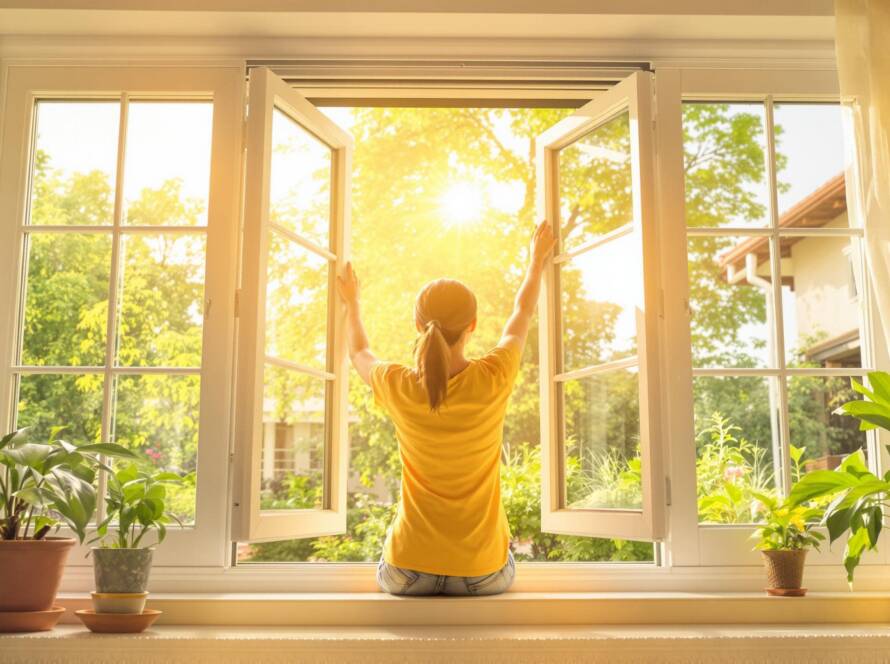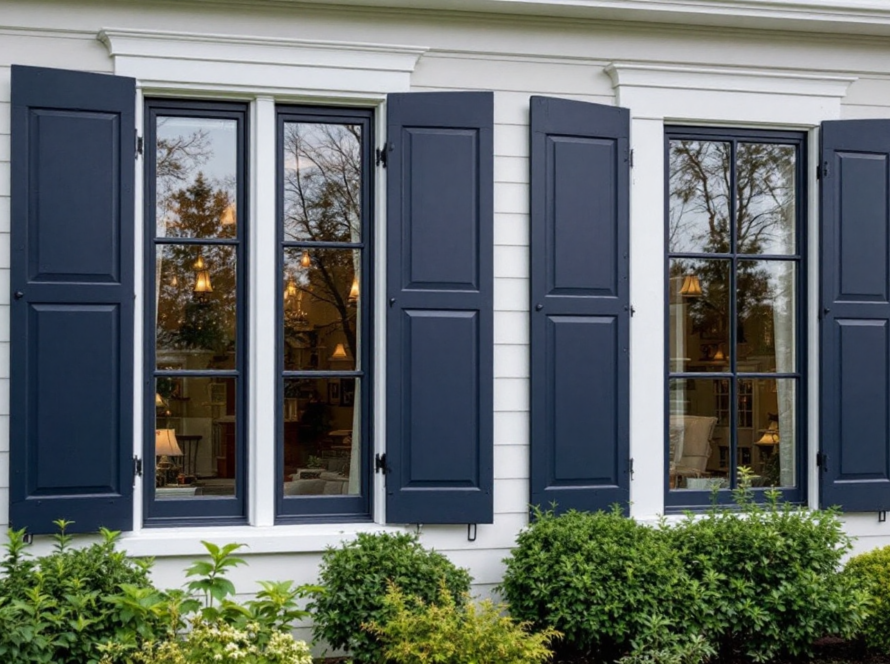Windows are more than just glass panes in a frame—they play a crucial role in energy efficiency, comfort, and home aesthetics. When shopping for new windows, you’ll encounter terms like U-Factor, Solar Heat Gain Coefficient (SHGC), and Visible Transmittance (VT). But what do they mean, and why should you care?
Understanding these ratings helps homeowners choose the right windows for their climate, leading to lower energy bills and a more comfortable home. In this guide, we break down these essential window performance metrics so you can make an informed decision.
TL;DR – Quick Guide
- U-Factor: Measures how well a window insulates. Lower numbers mean better insulation.
- SHGC (Solar Heat Gain Coefficient): Indicates how much solar heat a window lets in. Lower is better for hot climates, higher for cold ones.
- VT (Visible Transmittance): Shows how much natural light passes through. Higher VT means more daylight.
- Energy-Efficient Windows: Look for ENERGY STAR-rated windows with balanced U-Factor and SHGC based on your climate.
- Climate Considerations: Northern areas benefit from higher SHGC, while southern climates need lower SHGC windows.
Detailed Breakdown: Window Ratings Explained
1. What Is U-Factor?
U-Factor (or U-Value) measures how well a window prevents heat from escaping. It’s rated between 0.20 and 1.20, with lower numbers indicating better insulation.
- Lower U-Factor = Better insulation (ideal for colder climates).
- Higher U-Factor = Less insulation (not ideal for energy efficiency).
- ENERGY STAR standards: Look for U-Factor of 0.30 or lower in cold climates.
Example: A triple-pane window with a U-Factor of 0.25 insulates better than a double-pane window with a U-Factor of 0.35.
2. What Is SHGC (Solar Heat Gain Coefficient)?
SHGC measures the fraction of solar radiation a window allows inside. It’s rated between 0 and 1, where:
- Lower SHGC (below 0.40) = Less heat gain (ideal for hot climates).
- Higher SHGC (above 0.50) = More heat gain (better for colder regions).
- Balanced SHGC (0.30-0.50) works well in mixed climates.
Example: A window with SHGC of 0.25 blocks most solar heat, making it perfect for Texas summers.
3. What Is VT (Visible Transmittance)?
VT measures how much natural light enters through the window, rated between 0 and 1.
- Higher VT (0.60-0.80) = More natural light, better views.
- Lower VT (0.20-0.50) = Less glare, better for privacy or shading.
- Balanced VT (0.40-0.60) provides daylight without excessive brightness.
Example: A window with VT of 0.75 lets in plenty of sunlight, perfect for brightening a home office.
4. Choosing the Right Window Ratings for Your Climate
| Climate | Recommended U-Factor | Recommended SHGC |
| Cold (North) | 0.30 or lower | 0.50 or higher |
| Mixed (Central) | 0.30 – 0.40 | 0.30 – 0.50 |
| Hot (South) | 0.40 or lower | 0.25 – 0.40 |
Pro Tip: Look for ENERGY STAR-certified windows suited to your region for maximum efficiency.
5. Understanding ENERGY STAR Ratings
Windows that meet ENERGY STAR guidelines are independently tested for efficiency based on climate zones. They typically have:
✔ Low U-Factor for insulation
✔ Optimized SHGC for your region
✔ High VT for better daylighting
ENERGY STAR-rated windows can reduce energy bills by 12% and improve indoor comfort.
Key Takeaways
- U-Factor: Measures insulation—lower is better.
- SHGC: Controls heat gain—lower for hot areas, higher for cold.
- VT: Impacts daylight—higher for more light, lower for reduced glare.
- Choose windows based on your climate to maximize efficiency.
- ENERGY STAR-rated windows offer the best balance of insulation, heat control, and natural light.
FAQs
1. What is the most important window rating for energy efficiency?
The U-Factor is the most critical rating for insulation, especially in cold climates. However, in hot climates, SHGC is equally important to reduce unwanted heat gain.
2. Does a lower U-Factor mean a better window?
Not always. A very low U-Factor is ideal for cold climates, but in hot climates, SHGC matters more to prevent overheating. The right balance depends on your location.
3. Can high VT windows cause glare?
Yes, high VT windows (above 0.70) can cause glare, especially in sunny rooms. Using window coatings or blinds can help manage brightness while keeping natural light.
4. How do I find the best window ratings for my home?
Check ENERGY STAR guidelines for your climate zone. If you live in the North, prioritize U-Factor. In the South, focus on SHGC to minimize heat gain.
5. Do window coatings affect ratings?
Yes! Low-E (low emissivity) coatings can improve U-Factor and SHGC, reducing heat loss in winter and blocking excess heat in summer without sacrificing light.


